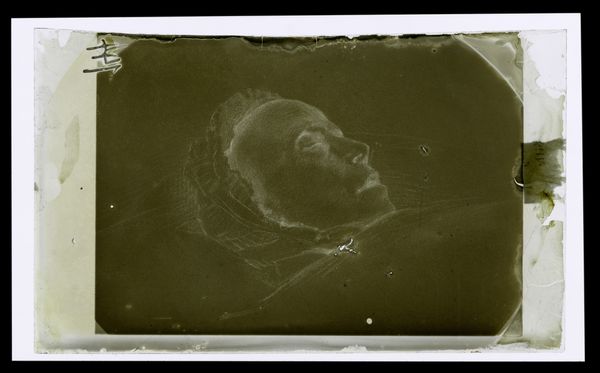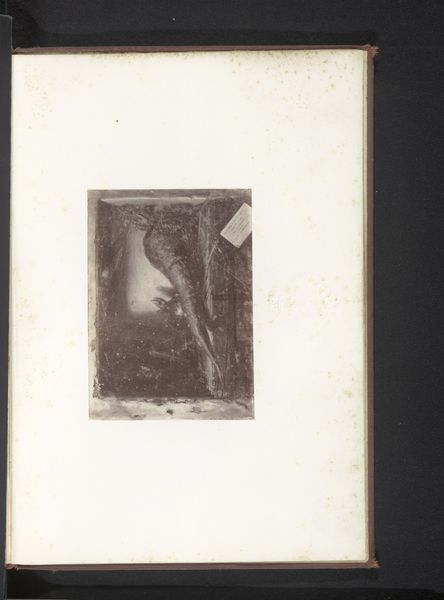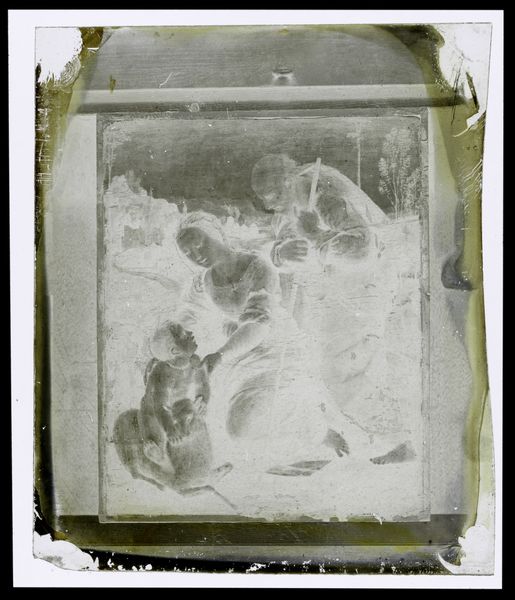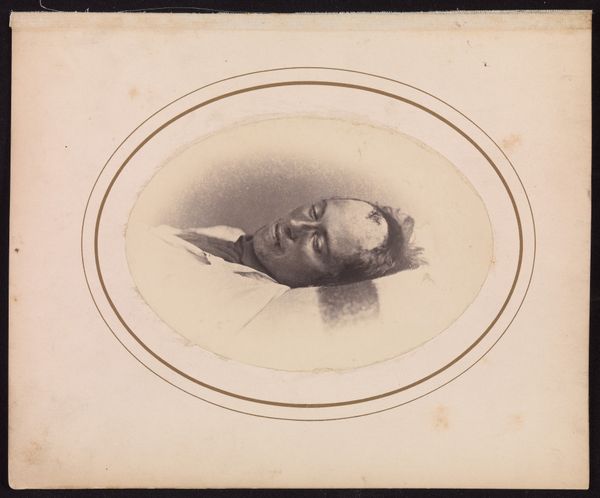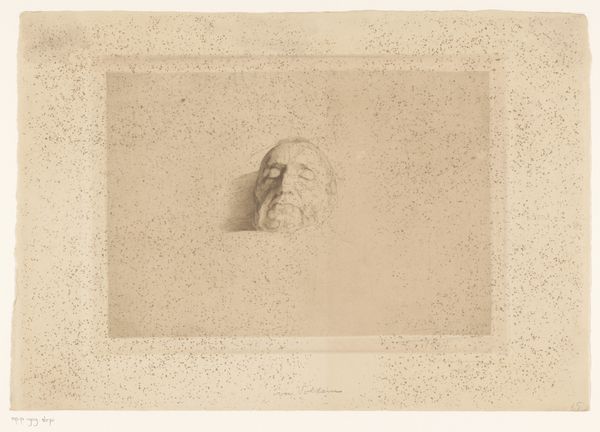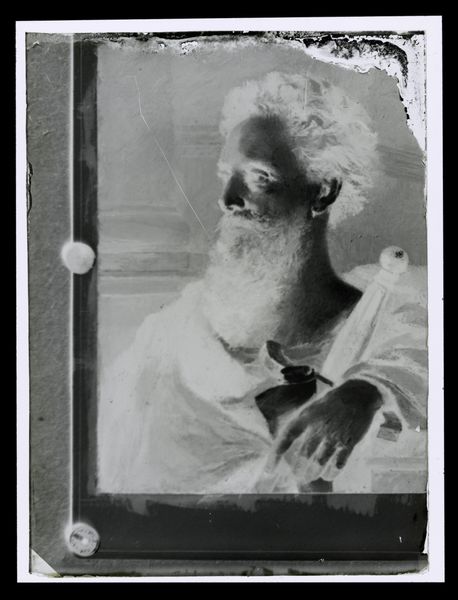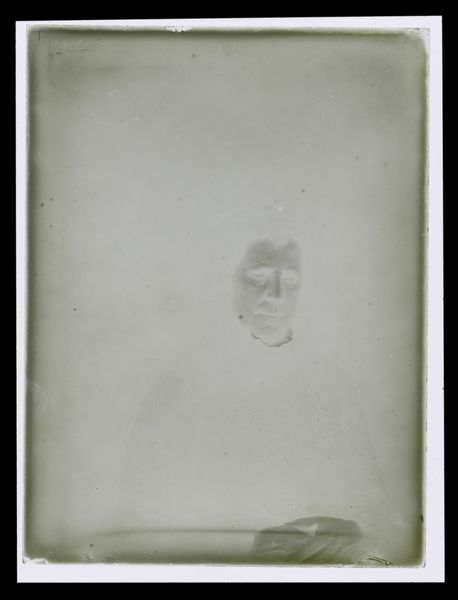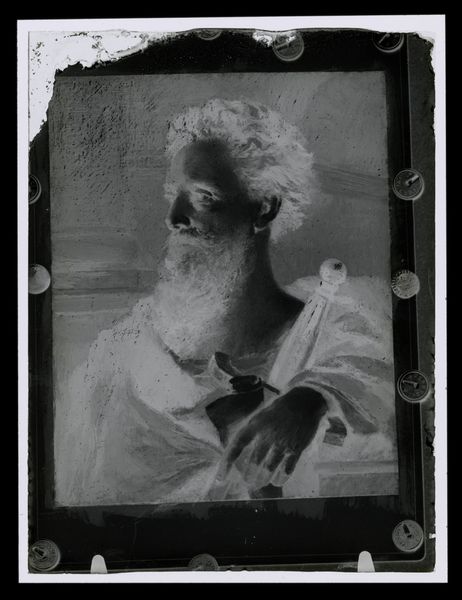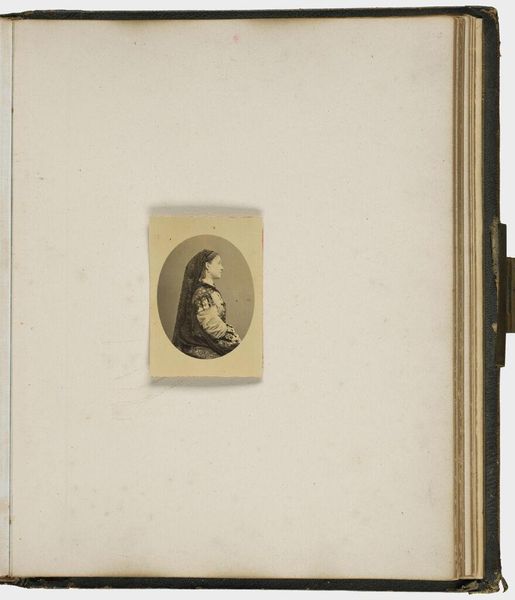
Fotoreproductie van een getekend post-mortem portret van een onbekende vrouw c. 1865 - 1900
0:00
0:00
photography, gelatin-silver-print
#
portrait
#
still-life-photography
#
photography
#
gelatin-silver-print
#
post-impressionism
Dimensions: height 90 mm, width 120 mm
Copyright: Rijks Museum: Open Domain
Curator: This is a reproduction of a post-mortem portrait of an unknown woman, likely dating between 1865 and 1900, created using a gelatin silver print. What strikes you about it? Editor: It’s eerie, yet peaceful. The texture of the print itself seems fragile, aged. It feels like holding a moment of Victorian mourning. I’m curious, what stands out to you in this piece? Curator: Let's consider the materiality itself. This isn’t just a portrait; it’s a record created through specific industrial processes. The gelatin silver print, a relatively accessible medium by the late 19th century, democratized portraiture and remembrance. Post-mortem photography became a means for the working class to access a form of memorial typically reserved for the wealthy. Do you think the medium alters our understanding of grief displayed? Editor: Absolutely, it makes it more immediate, almost visceral. The industrial process allowed for a wider distribution and consumption of this very personal image, creating an intriguing paradox. Were these images considered art, or mementos? Curator: The distinction blurs, doesn't it? What was deemed "art" was rigidly policed by academies but, these photographs were often carefully composed and treated as treasured keepsakes. This tension reveals a fascinating critique of high art through the lens of mass production and consumption. The photograph democratizes access to 'fine art' status through mechanical reproduction of a drawn portrait. Editor: That makes a lot of sense! Thinking about it as a product of industry and societal practice really shifts my perspective. I see how focusing on the materials and historical context helps to understand its complex nature. Curator: Indeed. Analyzing art through a materialist lens unveils these often-overlooked layers of production, labor, and consumption, granting us a far richer understanding.
Comments
No comments
Be the first to comment and join the conversation on the ultimate creative platform.

